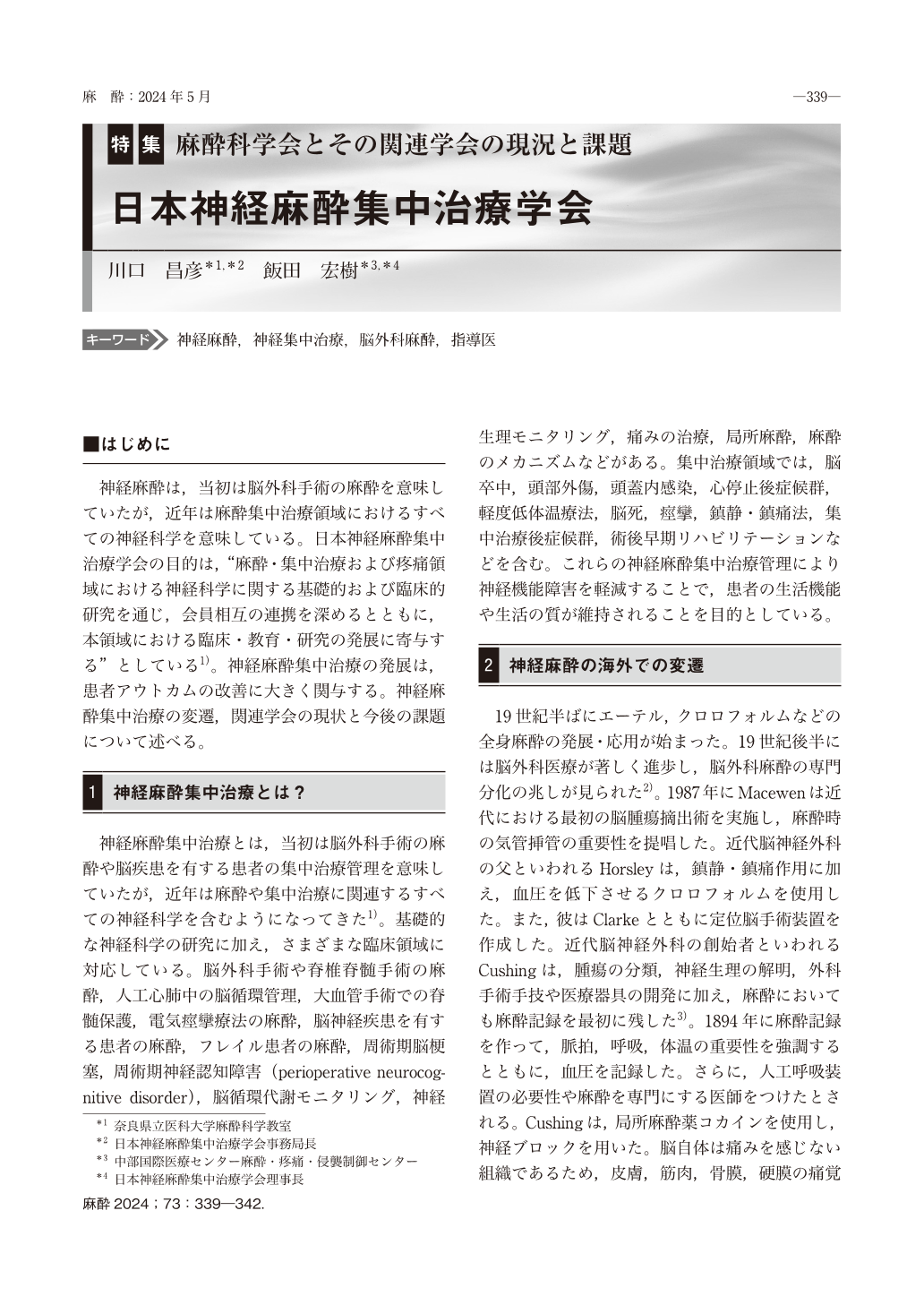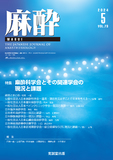Japanese
English
- 有料閲覧
- Abstract 文献概要
- 1ページ目 Look Inside
- 参考文献 Reference
はじめに
神経麻酔は,当初は脳外科手術の麻酔を意味していたが,近年は麻酔集中治療領域におけるすべての神経科学を意味している。日本神経麻酔集中治療学会の目的は,“麻酔・集中治療および疼痛領域における神経科学に関する基礎的および臨床的研究を通じ,会員相互の連携を深めるとともに,本領域における臨床・教育・研究の発展に寄与する” としている1)。神経麻酔集中治療の発展は,患者アウトカムの改善に大きく関与する。神経麻酔集中治療の変遷,関連学会の現状と今後の課題について述べる。
The number of patients with frailty and mild cognitive impairment in Japan is increasing due to the country’s super-aging population. The establishment of neuroanesthesia and neurocritical care for this patient populations is thus a critical issue when considering how to maintain these patients’ daily functioning and quality of life after surgery. The Japanese Society for Neuroscience in Anesthesiology and Critical Care(JSNACC)was founded in 1997 as the Japanese Society of Neuroanesthesia. Target fields of the JSNACC include(ⅰ)neurosurgery and neurocritical care management;(ⅱ)anesthesia-related neuroscience of the brain, spinal cord, nerves, pain, memory, and neuromuscular junctions;and(ⅲ)neurological outcomes such as delirium, cognitive dysfunction, stroke, and functional disability. Education and the recruitment of qualified instructors are important to improve the quality and safety of patient management and the patients’ outcomes. We discuss the changes in neuroanesthesia, the current status of related academic societies, and future challenges.

Copyright © 2024 KOKUSEIDO CO., LTD. All Rights Reserved.


